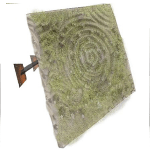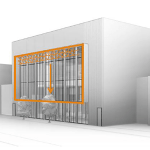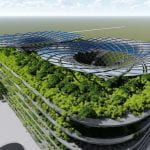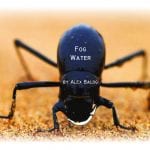
Basking Filter
Alex Balog and Julia May conceived of a non-clogging filter from the jaw of the Basking shark. Their concept was further developed by Alex with MBA student Ben Cooper to win multiple entrepreneurial awards.
Website
|

Moss Mandate
Heather Tietz created textures for growing air-cleansing moss.
|

Tetracoral Connections
Kathryn Hancock took a careful look at the shape of individual coral units and the overall pattern to create an interactive sculptural wall for her Lane Independent Living Alliance project.
|

Shell-ter
Considering how well the pillbug protects itself, Estefania Valdivia, Davis Sabatino and Jose Cuellar designed a storm-shelter that covers a house.
|

Pill Pendant
Will Ogburn used the same pillbug form to generate a shell for a luminaire design. |

Bridging the Gap
Bonnie Jean Dominguez used Kangaroo’s Physics simulator to capture the dynamics of Ants Bridging the Gap. |
|

Biosolar Shading
Hannah Zalusky researched the key variables for external sun-shading.
|

Solar Wings
Jocelyn Reynolds considered the varied patterns and structures of insect wings.
|

Ecosystem Building
Bryan Peters and Isaac Hadnutt envision a living greywater filter at the city scale.
|














